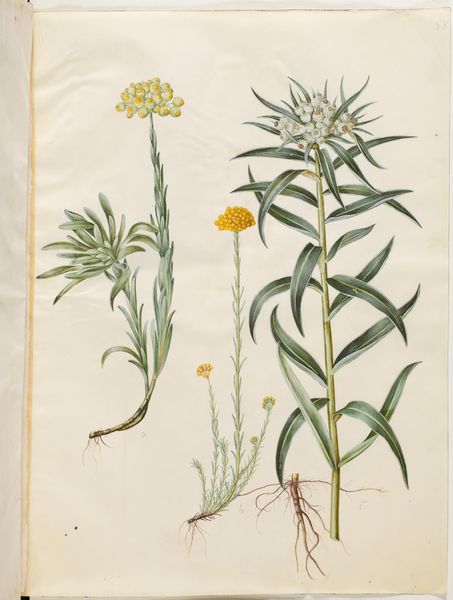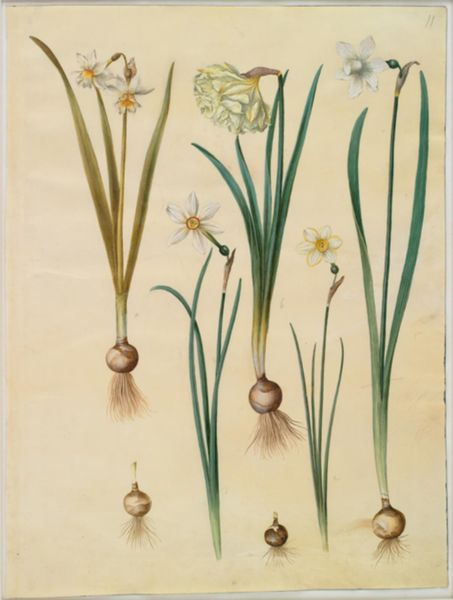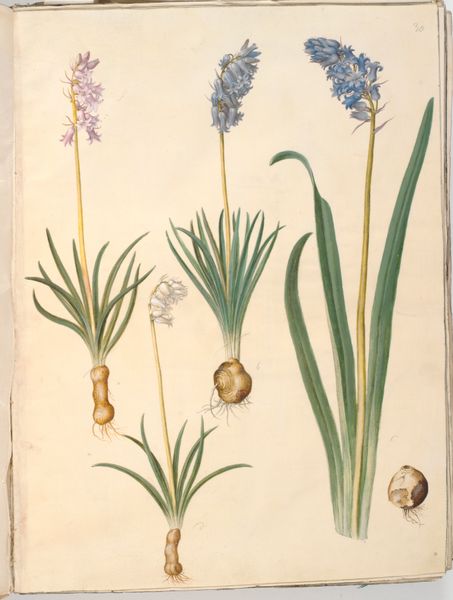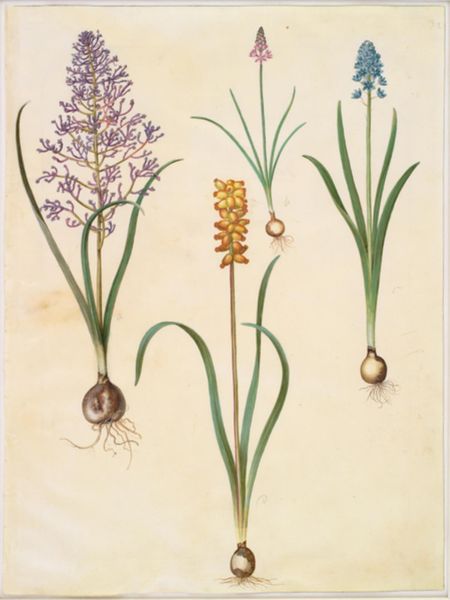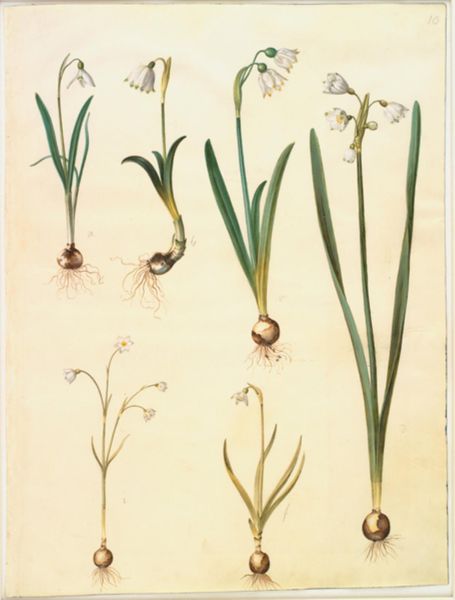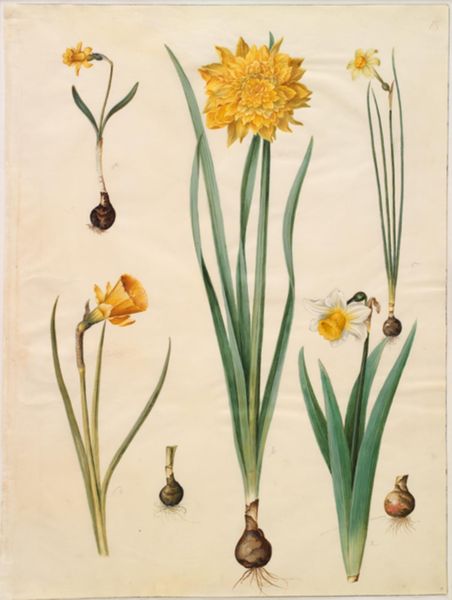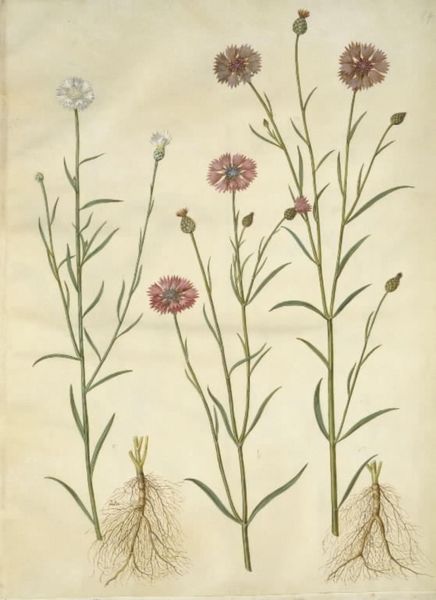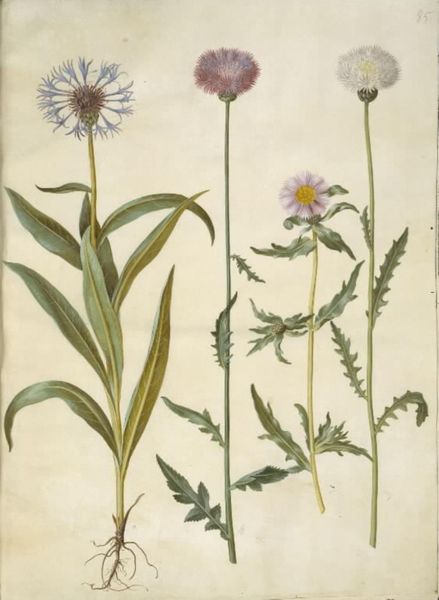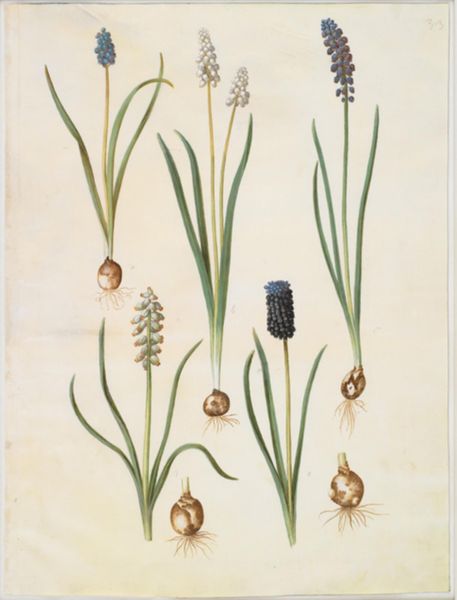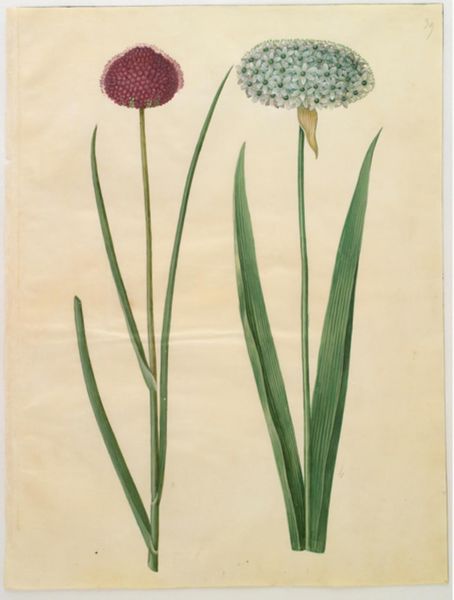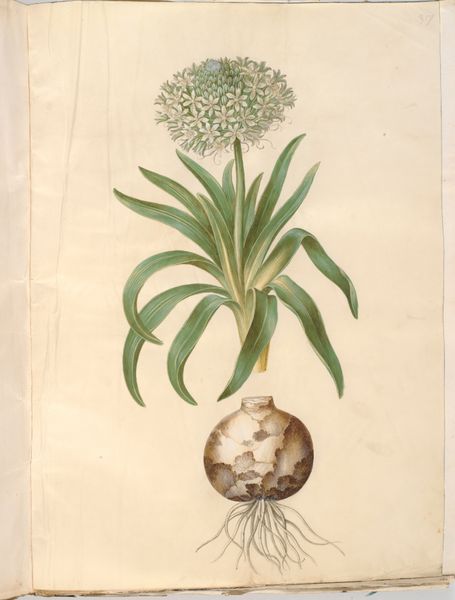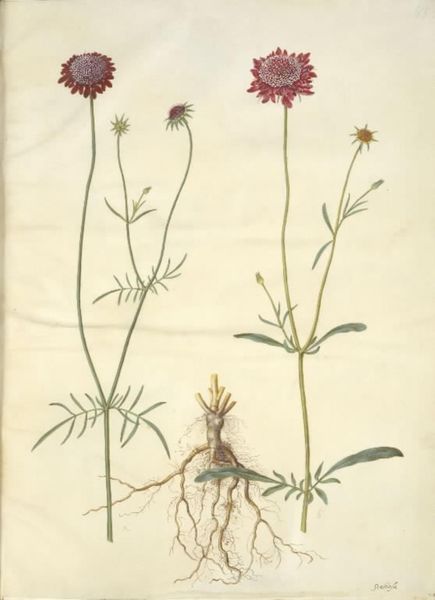
Allium moly (guld-løg); Allium nigrum (sort løg) 1649 - 1659
0:00
0:00
drawing, gouache, watercolor
#
drawing
#
gouache
#
11_renaissance
#
watercolor
#
watercolour illustration
#
botanical art
#
watercolor
Dimensions: 505 mm (height) x 385 mm (width) (bladmaal)
Editor: This is Hans Simon Holtzbecker’s *Allium moly (guld-løg); Allium nigrum (sort løg)*, a botanical illustration rendered between 1649 and 1659 using watercolor and gouache. It's incredibly detailed and delicate. I wonder, what do you see when you look at it? Curator: Well, first, I see the labor. Someone painstakingly applied pigment to paper, mixing watercolors and gouache to capture the textures and forms. The means of production themselves are interesting. These aren't industrial pigments, but carefully sourced materials, perhaps even hand-ground. It also sits at the nexus of art, science, and labor; illustrating plants for both aesthetic enjoyment and perhaps medicinal or scientific knowledge. How does this tension sit with you? Editor: That's fascinating. I hadn't considered the physical act of creating the paints themselves. So, you are suggesting it isn't just a pretty picture of some flowers, but rather documentation and even a product of craft? Curator: Precisely! Consider the social context of the materials. Where did the pigments come from? What was the paper made of? It is an artwork deeply embedded in the world. Think about the historical consumption of these paintings. Was it commissioned by wealthy patrons interested in expanding their knowledge of the natural world? What do we know about who commissioned Holtzbecker? The social use informs the artistic labor and execution. It complicates boundaries that separate art and scientific knowledge. Editor: I never thought about it that way. Looking closer, I notice how precise the details are—every vein, every tiny floret, meticulously rendered. I now consider how time-intensive it must have been. Curator: The intensive labor is key. It speaks to a different conception of value, doesn't it? Editor: Absolutely. It changes my understanding of not just this particular botanical illustration but of art from that era in general. Thank you for widening the scope. Curator: And thank you for engaging with a materialist reading. Considering artwork beyond traditional confines of aesthetics.
Comments
No comments
Be the first to comment and join the conversation on the ultimate creative platform.
